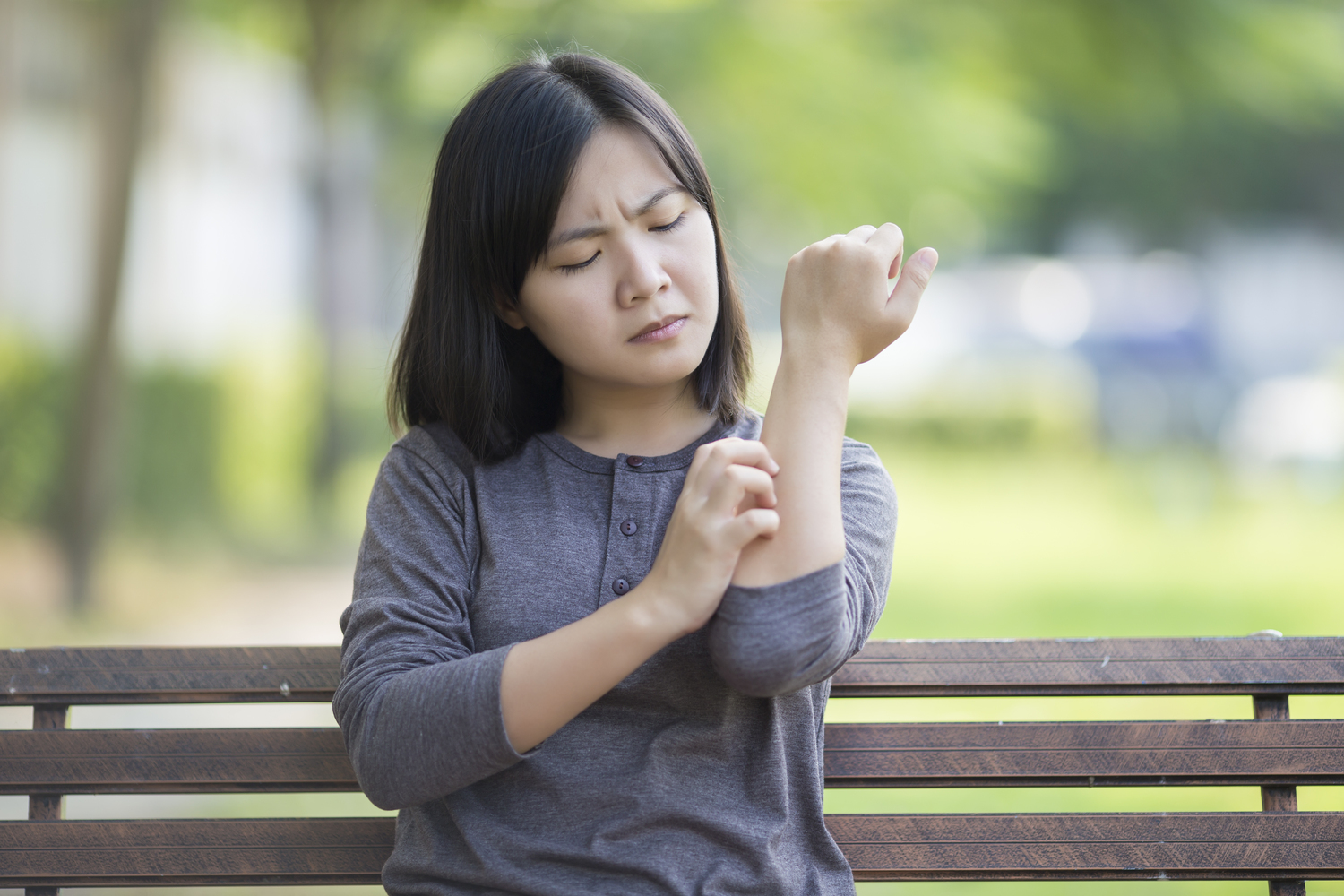Understanding 10 Types of Skin Rashes
A rash develops when an area of the skin gets inflamed, changes color, or breaks into scales, sores, or blisters. Usually, skin rashes are brought on by heat, infection, or exposure to allergens such as dyes in clothes, chemicals in fragrances, ingredients in beauty and skincare products, or even plants such as ivy. While some rashes go away, others might develop due to serious underlying health issues requiring immediate medical attention.

Eczema
In this condition, the skin becomes inflamed, red, itchy, and develops cracks. Occasionally, the skin may break out into sores or blisters. The symptoms can go away for some people, but for others, eczema may be a lifelong condition. It is usually caused by exposure to skin irritants like certain soaps, skin care products, and synthetic fabric. Doctors can help identify the rash as eczema and determine the trigger.
Scabies
This skin condition is caused by microscopic organisms called itch mites, which burrow into the upper layer of the skin and lay eggs. The common symptoms are redness and itchy skin with pimple-like rashes. Scabies is highly contagious and can spread among people living in close quarters. This type of skin rash is treatable, so concerns should be communicated to a dermatologist.
Shingles
This condition is brought on by the varicella-zoster virus—the same virus that causes chickenpox. Even when one recovers from chickenpox, the virus may continue to survive in the body for many years before breaking out as shingles, which is an infection of a nerve. One can identify a rash as shingles if pus-filled blisters are observed, usually accompanied by pain and a burning sensation. Some people may also experience fever, chills, headaches, and fatigue. While there is no cure for shingles, doctors may provide treatment plans to relieve the symptoms and treat the infection.
Psoriasis
This condition is characterized by dry, scaly, and itchy patches on the body. It is an autoimmune disorder where the white blood cells attack healthy skin cells in the body, leading to an overproduction of these cells. The new skin cells are pushed to the surface, where they pile up and form scales. This type of skin rash is usually white in color, but scales can be purple, dark brown, or grey on darker skin. There is no cure for this condition, however, treatment options recommended by doctors can help ease the symptoms.
Contact dermatitis
This type of rash develops when one comes into contact with an irritant or develops an allergy to a particular substance. Indications of contact dermatitis include itchy, dry, and scaly skin, accompanied by swelling and redness. Blisters and sores may also be observed.
Rosacea
This is a chronic condition that causes tiny, red bumps to appear on the face. Typically, rosacea is restricted to the skin on the nose, cheeks, and forehead. Rosacea can be divided into 4 types, each characterized by different symptoms:
Erythematotelangiectatic rosacea (or ETR) is associated with redness and/or flushing in the face with visible blood vessels.
Acne rosacea (papulopustular rosacea), as the name suggests, is characterized by red acne-like breakouts on the face with visible blood vessels.
Rhinophyma results in thickening of the skin on the nose, which may extend to the forehead. This rare form of rosacea is more common among men than women. Ocular rosacea affects the eyes, making them red, sensitive, dry, and itchy.
Rosacea has no cure, but doctors can recognize the exact type and provide specific treatment options to improve the symptoms.
Hives
This condition is characterized by raised, itchy, and red or discolored welts across the body. Usually a mysterious type of skin rash, hives can have many triggers—certain food items (such as nuts, eggs, or fish), extreme heat or cold, insect bites, and allergies, among others.
Flea bites
Fleas are tiny insects that usually live on household pets, such as cats and dogs. Flea bites appear as small, discolored bumps and can cause redness and severe itchiness. One must avoid scratching the affected area as that can result in bacteria entering the bloodstream, causing a severe infection. The best way to prevent this condition is to get rid of fleas by opting for flea removal treatment.
Cellulitis
This type of skin rash is caused by bacteria or fungi entering the body through a cut or crack in the skin. It is considered an emergency, and the patient should receive urgent care. One way to identify the rash as cellulitis would be to see if the area around the rashes is inflamed and feels warm to the touch. The skin will appear swollen, discolored, and will be painful. One is also likely to develop a fever.
Measles
This condition causes rashes all over the body and is highly contagious. People with measles also experience other symptoms such as fever, cough, throat irritation, and runny nose. Flat, red spots appear along the face and spread downward to the neck, arms, and legs.
These 10 types of skin rashes can vary in appearance depending on the skin tone. Persistent rashes should be diagnosed by a doctor to determine the exact cause. A dermatologist may also provide a skin rash identification chart for visual representation and options to treat the underlying skin condition.




